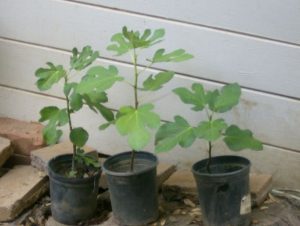What is an avid gardener to do in the dead of winter, when it’s cold, wet, and most plants are asleep? Here are a few ideas for outdoor and indoor activities that will help you plan and prepare for spring.
Maintain Garden Tools. Clean, sharpen and repair garden tools before putting them away so they will be ready for use on that first glorious spring day.
Keep the bugs at bay. Rather than waiting until mid-spring, when hordes of aphids and other pests cover your beloved plants, one of the simple actions you can take now to prevent or minimize their presence in your garden is to use dormant oil (also called horticultural oil) sprays. Many common pests overwinter on plants and/or in surrounding soil, so these sprays work by smothering the pests that are actually on the plant and the soil surface at the time you spray. They can even kill eggs and larvae. Horticultural oil sprays are relatively nontoxic, and come in heavier, dormant versions for use in winter, and lighter, summer sprays. Always read the labels to ensure you use them wisely.
Start Aging Manure Now. If you’d like to use manure in your garden come spring planting time, buy it now and put it somewhere in the landscape where it can age for at least two months before use. Fresh manures, especially nutrient-rich chicken manure, are too “hot” to use in a planting hole, as they might burn tender roots. Plus, plants cannot make use of the nutrients in manures until they have at least partially decomposed.
Start Composting! Making your own soil is a magical thing. And there is a composting method for everyone, whether you opt for a small, convenient plastic tumbler just outside your kitchen door or go big-time with a large outdoor system. For a basic primer on composting, visit this Central Sierra Master Gardener web page: http://cecentralsierra.ucanr.org.
Curl Up With Seed Catalogs and Gardening Books. This is probably my favorite winter gardening activity. Pore over garden and landscaping books and websites to research plants and their ideal growing conditions, learn how to install drip irrigation systems, or maybe pinpoint the causes of and ways to prevent pests or plant diseases that plagued your garden this past year. There are a gazillion gardening resources, but some of the best are: Sunset’s Western Garden Book, the California Native Plant Society website (cnps.org), UCCE California Garden Web (http://cagardenweb.ucanr.edu/) and the self- published UCCE Tuolumne Master Gardener Book titled “Sharing the Knowledge” which can be found at the Mountain Book Store located at the junction and also the UCCE Office in Sonora (209-533-5695).
If you plan to start plants from seeds indoors, now is the time to peruse the seed catalogs and order. There are many seed companies to choose from, but here are a few of my favorites: Baker Creek Heirloom Seeds (www.rareseeds.com) and Johnny’s Selected Seeds (www.johnnyseeds.com). Also, check out the seed-lending library at the Tuolumne County Library. Call for days/times: 533-5507.
Start a Gardening Journal. Use this relative downtime to make notes about what worked and what didn’t in your garden last year. Think about your goals for your landscape, and prioritize the tasks necessary reach them. Consider purchasing a calendar that you dedicate to gardening to-dos by month.
Gardening is, in a way, a state of mind, so enjoy the tasks that are ideal for winter weather now — because before you know it, spring will be here.
Rachel Oppedahl is a University of California Cooperative Extension Master Gardener of Tuolumne County who spends way too much time with her nose in gardening books and seed catalogs.


